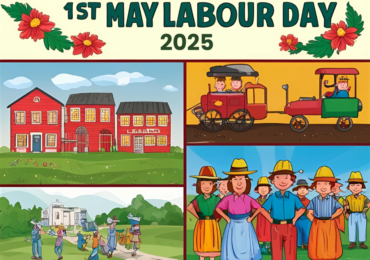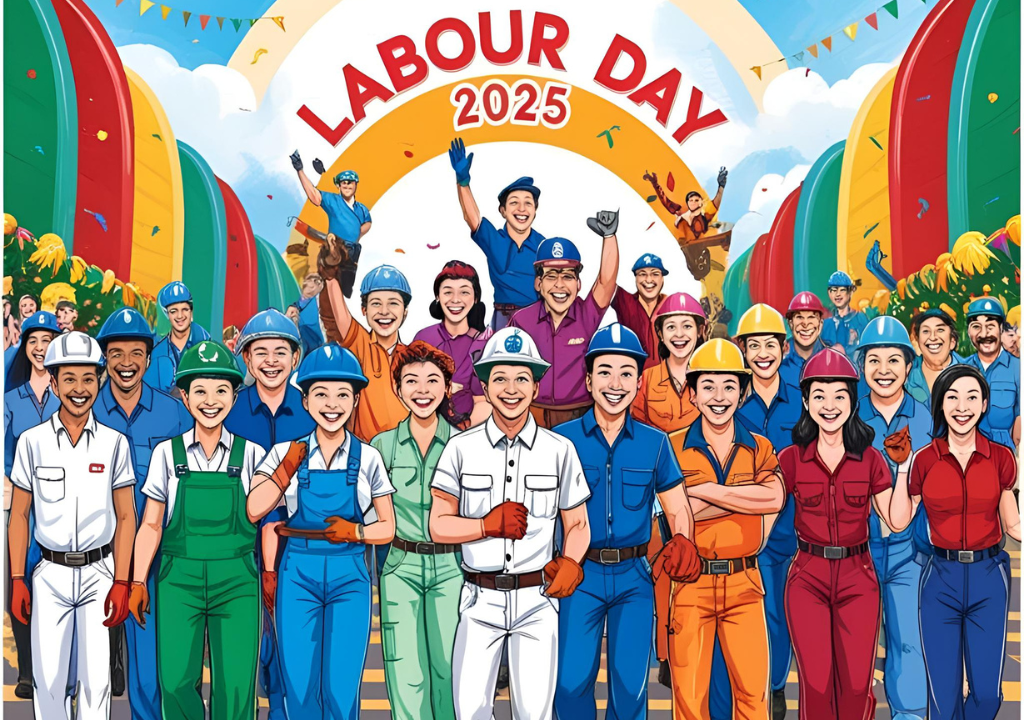Observed each year on May 1st, Labour Day 2025 serves as a powerful reminder of the relentless efforts and historical struggles of the working class. Born from protests demanding fair working conditions and wages, Labour Day is now a symbol of global solidarity. As the nature of work evolves in the digital age, this day remains as important as ever, focusing attention on worker protection, equality, and economic justice.
What is Labour Day?
Labour Day is an annual event celebrated in many countries to recognize the efforts and achievements of workers. Commonly referred to as May Day, it is often marked by demonstrations, public gatherings, and awareness campaigns led by trade unions and civil society groups.
In some countries like the US and Canada, a separate Labour Day is observed in September, but globally, May 1st remains the day for workers’ solidarity.
How Labour Day Began
The foundation of Labour Day lies in the labor union movements of the late 1800s, particularly in Chicago, USA, where workers demanded an eight-hour workday. The protests escalated into what is known as the Haymarket Affair in May 1886, resulting in police violence and multiple deaths.
Despite the tragedy, the movement inspired international labor organizations. In 1889, the Second International declared May 1st as International Workers’ Day, to honor the sacrifices made by labor activists in pursuit of justice and dignity.
India’s First Labour Day Celebration
In India, Labour Day was first observed on May 1, 1923, in Chennai. The event was organized by Comrade Singaravelar, a socialist leader who also established the Labour Kisan Party of Hindustan.
That celebration saw the red flag—a symbol of labor movements worldwide—unfurled for the first time in Indian political history. Since then, May Day has evolved into a national platform to discuss labor reforms and worker welfare.

Why Labour Day Is Observed
Labour Day is more than a date on the calendar—it’s a meaningful recognition of the enduring fight for workers’ rights across generations. While it pays homage to past labor struggles, it also champions the vision of a just and equitable working environment in the present and future.
Key Purposes Behind Labour Day:
- To celebrate the workforce and their indispensable contribution to national productivity
- To highlight the importance of safeguarding labor rights through policy and reform
- To raise voices for better wages, benefits, and workplace safety
- To reinforce the social value of labor—from blue-collar to digital and informal work sectors
Rather than being simply a day off, Labour Day stands as a symbol of respect, resilience, and the pursuit of economic justice.
Evolution of Workers’ Rights
Historical Struggles
Earlier centuries saw workers endure exploitative conditions—long hours, unsafe workplaces, no job security, and no recourse to justice. The labor rights movement emerged as a fight against this exploitation.
Current Landscape
Today, many of the protections we take for granted—like minimum wage, pension schemes, and health and safety laws—are the direct result of those early movements.
Yet modern labor issues persist:
- Contractual jobs without benefits
- Informal sector workers lacking representation
- Unpaid internships and gender wage disparities
The fight for justice is far from over.
Links Suggested: US Intelligence Chief Backs PM Modi’s Fight Against Pahalgam Terror Attack
Why Labour Day Still Matters in the Modern Era
In today’s rapidly changing world—driven by digital transformation, globalization, and platform-based economies—the relevance of Labour Day is more urgent than ever. While the tools of work have evolved, the fundamental concerns around worker rights and protections remain.
Here’s why Labour Day continues to be significant in 2025:
- Remote work has blurred boundaries between professional and personal life, often leading to overwork, stress, and lack of downtime.
- Gig economy workers—like delivery agents, freelancers, and app-based contractors—often operate without formal protections like health insurance, job security, or minimum wage guarantees.
- Automation and artificial intelligence pose a real risk of large-scale job disruption, demanding forward-looking labor policies that prioritize retraining and job creation.
- Migrant laborers, especially in sectors like construction and agriculture, continue to face exploitative conditions with limited legal recourse.
In a landscape where technology is redefining industries, Labour Day serves as a vital reminder: progress should never come at the expense of workers’ rights or human dignity.
Links Suggested: India-China Trade War: Can India Adopt Trump’s Economic Playbook?
Labour Day 2025: Key Focus Areas
Each Labour Day brings with it a fresh perspective that addresses the most pressing concerns of that time. For Labour Day 2025, global labor organizations are expected to focus on issues reshaping the modern workplace.
- Artificial Intelligence and Job Security: Policies to ensure AI and automation complement human labor instead of replacing it
- Digital Worker Rights: Legal frameworks to protect gig workers, freelancers, and remote employees in the platform economy
- Workplace Inclusion and Fairness: Action plans for reducing gender disparities and promoting inclusive hiring and pay
- Green Economy and Employment: Encouraging job growth through sustainable industries, clean energy, and environmentally responsible practices
The International Labour Organization (ILO) and trade unions worldwide are expected to advocate these themes through events, digital campaigns, and policy lobbying.
Conclusion
Labour Day 2025 is not just a day on the calendar—it’s a testimony to human struggle, solidarity, and progress. As the future of work undergoes seismic shifts, remembering the roots of the labor movement becomes essential.
Whether it’s a factory worker, a delivery rider, a teacher, or a software engineer—every worker deserves rights, dignity, and a fair stake in prosperity. On this May 1st, let us reaffirm our commitment to building a world where labor is honored, not exploited.

